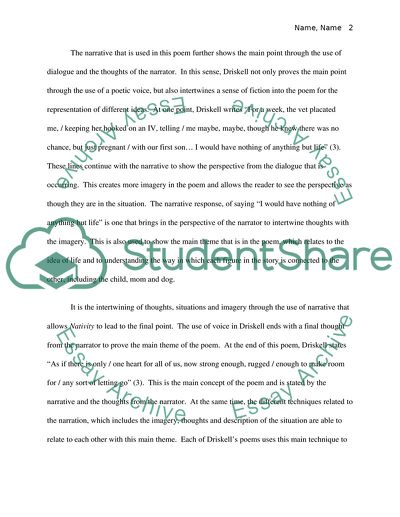Cite this document
(Poet Kathleen Driskells Use of Sound Research Paper, n.d.)
Poet Kathleen Driskells Use of Sound Research Paper. Retrieved from https://studentshare.org/literature/1734333-poet-kathleen-driskells-use-of-sound-voice-and-theme-in-her-book-laughing-sickness
Poet Kathleen Driskells Use of Sound Research Paper. Retrieved from https://studentshare.org/literature/1734333-poet-kathleen-driskells-use-of-sound-voice-and-theme-in-her-book-laughing-sickness
(Poet Kathleen Driskells Use of Sound Research Paper)
Poet Kathleen Driskells Use of Sound Research Paper. https://studentshare.org/literature/1734333-poet-kathleen-driskells-use-of-sound-voice-and-theme-in-her-book-laughing-sickness.
Poet Kathleen Driskells Use of Sound Research Paper. https://studentshare.org/literature/1734333-poet-kathleen-driskells-use-of-sound-voice-and-theme-in-her-book-laughing-sickness.
“Poet Kathleen Driskells Use of Sound Research Paper”, n.d. https://studentshare.org/literature/1734333-poet-kathleen-driskells-use-of-sound-voice-and-theme-in-her-book-laughing-sickness.


